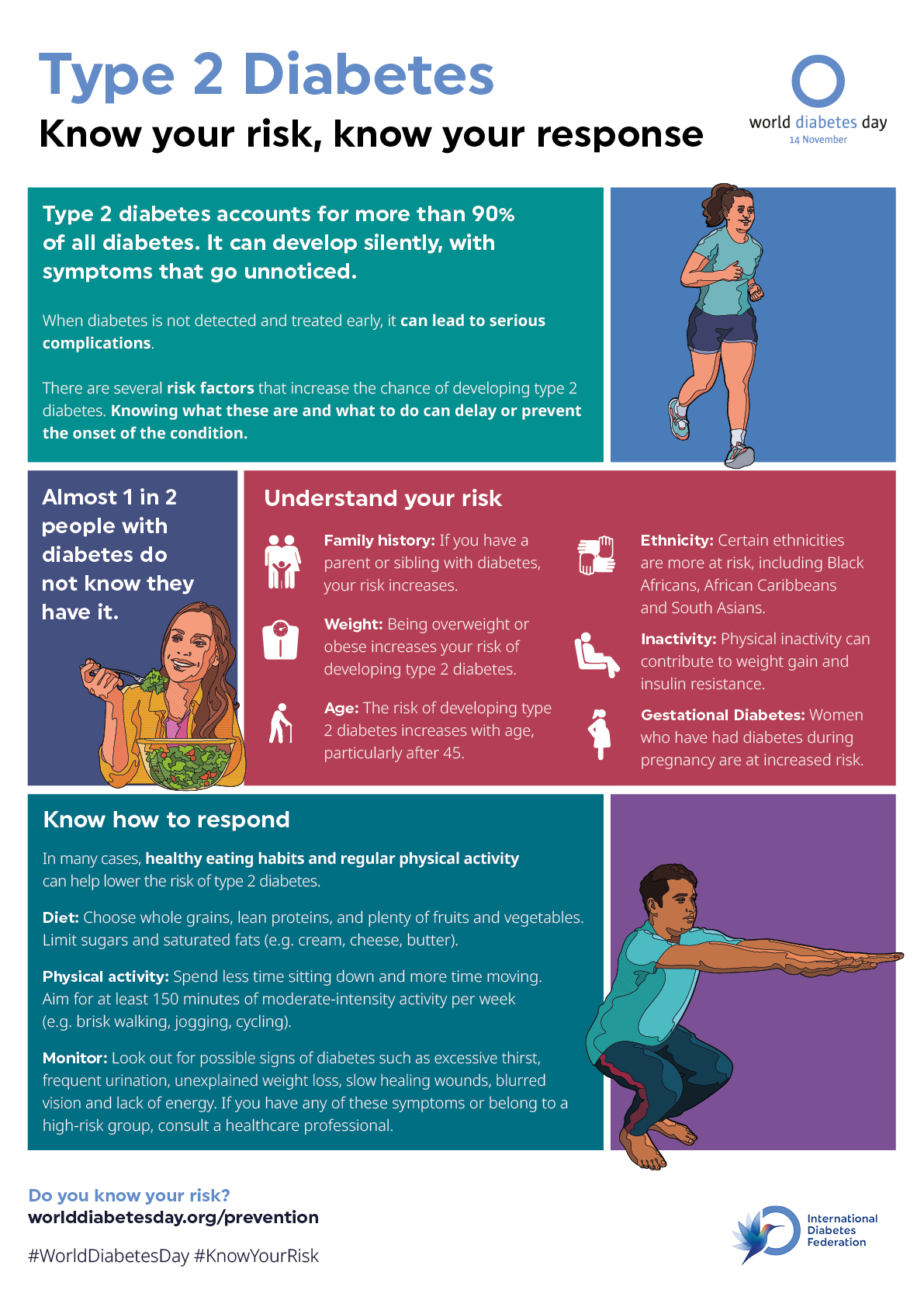What is Type 2 Diabetes?
Type 2 diabetes is a chronic condition that affects the way the body processes blood sugar (glucose). It’s the most common type of diabetes, making up over 90% of cases. Often, it develops slowly, and many don’t realize they have it, which can lead to further health issues if left unchecked.
Recognizing the Risk Factors
Knowing the risk factors is key to prevention. Here are some factors to be aware of:
Family History: If your close relatives have diabetes, your risk is higher.
Weight: Excess body weight, especially around the waist, increases your risk.
Age: Those over 45 are at a higher risk, though it can occur at any age.
Ethnicity: Certain groups, including Black Africans, African Caribbeans, and South Asians, are at a higher risk.
Physical Inactivity: A sedentary lifestyle can lead to weight gain and insulin resistance.
Gestational Diabetes: If you had diabetes while pregnant, your risk is increased.
How to Respond to Diabetes Risk
The good news is that lifestyle changes can significantly reduce your risk:
Diet: Opt for whole grains, lean proteins, fruits, and vegetables. Limit intake of sugars and saturated fats.
Physical Activity: Stay active. Aim for 150 minutes of moderate exercise per week, like brisk walking or cycling.
Monitoring: Be on the lookout for symptoms like excessive thirst, frequent urination, unexplained weight loss, or slow-healing wounds. If you notice these or are at high risk, consult a healthcare professional.
Conclusion
Half of all adults with diabetes are unaware of their condition. World Diabetes Day is an excellent time to reflect on your health habits. Knowing your risk and taking proactive steps can help with prevention, early diagnosis, and effective treatment.
